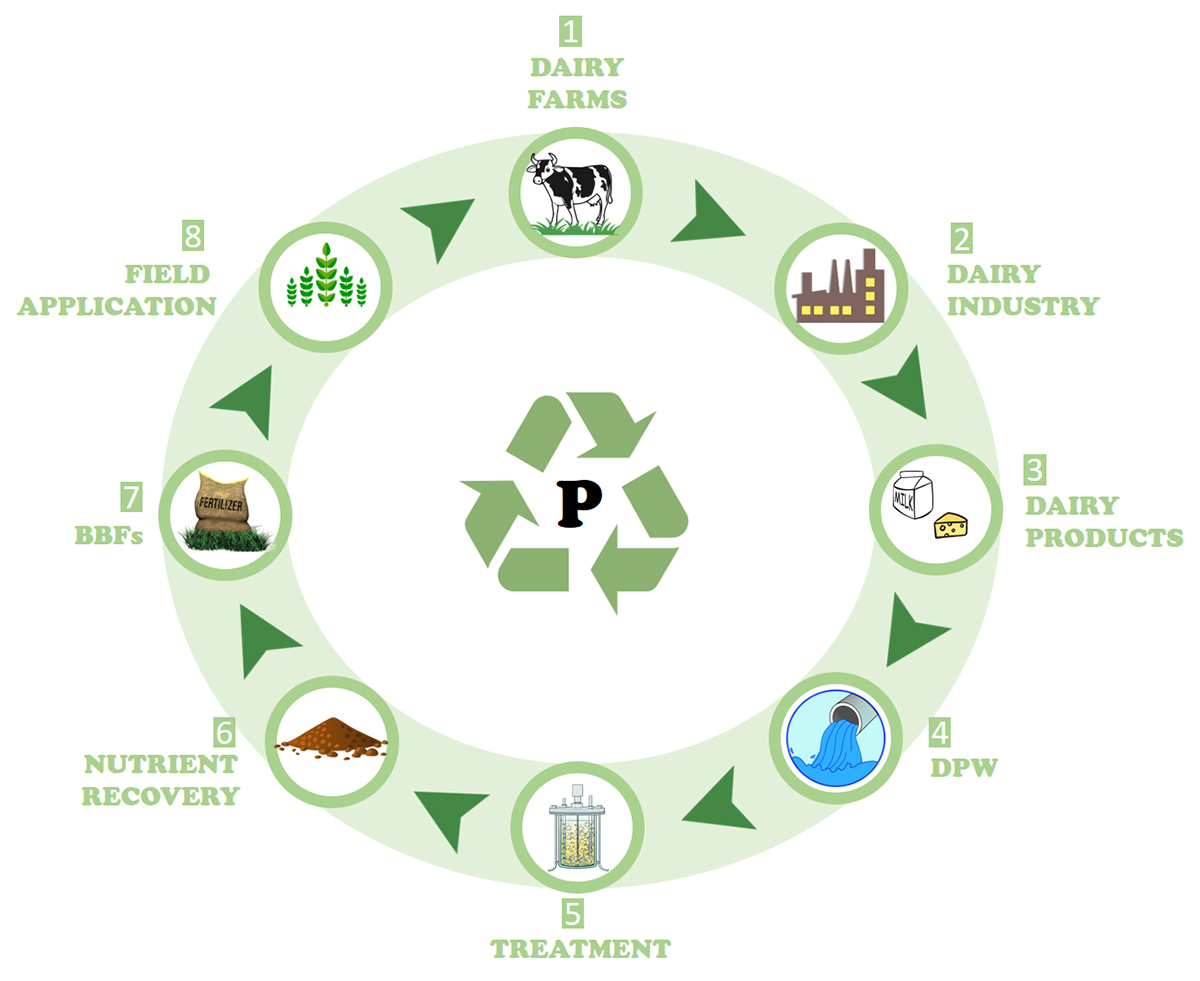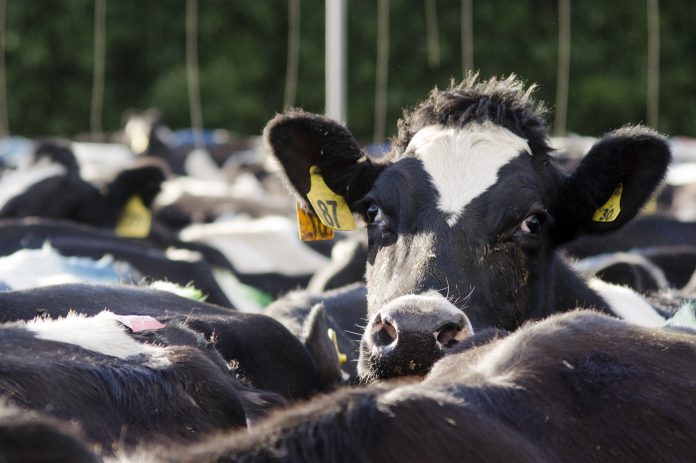Sergio Ponsá talks about the valorization of the wastes generated by the dairy industry to recover phosphorous, a relevant macronutrient for plant growth that currently depends on a critical raw material
Phosphorus (P) is a macronutrient required for the growth of plants and frequently limits the productivity of agroecosystems. Currently, almost 90% of the finite phosphate rock resources are being used for inorganic fertiliser production, animal feed and plant protection products. Phosphate rock was listed as an EU critical raw material in 2014, triggering the attention over poor management of this resource and stimulating interest in P recovery and reuse. Also, exponential growth in nutrient flows has led to concerns about waste generation. This is particularly the case for the dairy processing industry.
Threats and opportunities for the dairy processing wastes (DPW) management
With the rapid industrialisation observed in the last century and the growing rate of milk production, dairy processing is considered the largest industrial wastewater source in Europe. Dairy industry generates a wastewater stream commonly known as DPW which is stated to be one of the uppermost generators of surface waters pollution.
Within the new Green Deal, EU establishes ambitious objectives for the agriculture-food system, including the reduction of nutrient losses by 50% and of fertiliser use by 20% before 2030. The EU Circular Economy initiative along with the revised fertiliser regulations, therefore, provides an opportunity for industrialised food production systems to play a key role in the recovery and recycling of P and to enable more sustainable and efficient food production. This will close the P cycle, increase EU resilience to potential future disruption to P supply chains, while mitigating the environmental consequences of P leakages into surface waters.
Unlocking the potential of DPW: P-rich bio-based fertilisers (BBF)
The current scenario opens opportunities for the dairy processing industry to innovate in P recovery and reuse by adapting technologies and new waste management strategies that minimise P losses while benefiting from emerging market opportunities. Unfortunately, to date, finding a solution to reusing P from DPW has been hampered by a lack of available effective and efficient technology. However, valuable non-mineral P can be recovered from P-rich DPW and used as BBF over the use of inorganic fertilisers in agriculture.
Available alternatives for organic amendments application consist basically of land spreading. Identified advantages of this practice include the improvement of soil structure, low cost (compared with inorganic fertilisers) and the product high availability. However, some drawbacks are commonly observed such as odour nuisance, the uncertainty of nutrient content, pathogen content and difficulty in handling and application planning.
The development of specific technologies that focus on the recovery and reuse of nutrients are urgently needed. Given the vast and ever-increasing volume of DPW generation and its nutrient content makes it a suitable candidate for producing safe and effective BBF that could replace both inorganic fertilisers and direct land application.
The specific requirements to ensure the long-term economic and environmental sustainability of these BBF products are including obligatory maximum contaminant levels, the use of defined component material categories, safe and usable in agricultural areas to build both fertility and soil quality and importantly to reduce the risk to human health and environment.
Technological approaches for P-rich BBF production from DPW
To date, several technologies are being developed to produce BBF from DPW, which focus on P accumulation, mineralization and purification. Technology for precipitation and crystallization of DPW as salt-form are the common methods applied for the mineralization process, for example, as a form of struvite, hydroxyapatite and vivianite. Other interesting technologies to produce BBFs consist of concentrating the DPW to reduce the water content and recover valuable elements (i.e. bio-electro concentration, electrodialysis, adsorption, evaporation and reverse osmosis).

BETA Technological Center (Catalunya, Spain) is currently working in two different technological approaches to recover nutrients from DPW:
- Enhanced biological phosphorous removal (EBPR), a process relying on polyphosphate-accumulating organisms to uptake P from DPW and concentrate into bio-solids. This P-rich biosolid can be either applied directly to the land or mineralized and recover P as struvite or phosphoric acid (H3PO4).
- Anaerobic membrane bioreactor (AnMBR) which basically combines the technology of anaerobic digestion with membrane separation. Further, the obtained digested is concentrated by the application of the freeze concentration technology to attain the P-rich products.
Conclusion and envisioned future
The opportunity for processing DPW into BBF will increase the overall sustainability of the dairy farming system by indirectly reducing the existing pressure for the obtaining and production of P mineral products, and directly by preventing nutrient leaching to surface and groundwaters. Nonetheless, the bio-based attribute is generally not a sufficient argument for choosing a product. Therefore, a key aspect which challenges the successful establishment of BBF as an alternative to inorganic fertilisers is understanding the stakeholder’s perspective, particularly the dairy farmer’s choice decision processes and acceptance factors. In this regard, main concerns correspond to the market price, certainty in the nutrient content, fertiliser equivalence value, absence of micropollutants and rate of nutrient release.
To fulfil these stakeholder’s needs and expectations, REFLOW, an interdisciplinary cross-sectoral H2020 European Training Network project, will develop and provide a solid economic and environmental alternative to inorganic fertilisers by delivering cost-effective, nutritive and safe standardised BBF products. In accordance with the circular economy framework, new fertiliser products will increase, or at least maintain, actual production yields while avoiding environmental impacts in the dairy processing industry.
*Please note: This is a commercial profile











